Yingyang Chen
Coordinated RSMA for Integrated Sensing and Communication in Emergency UAV Systems
Jun 27, 2024



Abstract:Recently, unmanned aerial vehicle (UAV)-enabled integrated sensing and communication (ISAC) is emerging as a promising technique for achieving robust and rapid emergency response capabilities. Such a novel framework offers high-quality and cost-efficient C\&S services due to the intrinsic flexibility and mobility of UAVs. In parallel, rate-splitting multiple access (RSMA) is able to achieve a tailor-made communication by splitting the messages into private and common parts with adjustable rates, making it suitable for on-demand data transmission in disaster scenarios. In this paper, we propose a coordinated RSMA for integrated sensing and communication (CoRSMA-ISAC) scheme in emergency UAV system to facilitate search and rescue operations, where a number of ISAC UAVs simultaneously communicate with multiple communication survivors (CSs) and detect a potentially trapped survivor (TS) in a coordinated manner. Towards this end, an optimization problem is formulated to maximize the weighted sum rate (WSR) of the system, subject to the sensing signal-to-noise ratio (SNR) requirement. In order to solve the formulated non-convex problem, we first decompose it into three subproblems, i.e., UAV-CS association, UAV deployment, as well as beamforming optimization and rate allocation. Subsequently, we introduce an iterative optimization approach leveraging K-Means, successive convex approximation (SCA), and semi-definite relaxation (SDR) algorithms to reframe the subproblems into a more tractable form and efficiently solve them. Simulation results demonstrate that the proposed CoRSMA-ISAC scheme is superior to conventional space division multiple access (SDMA), non-orthogonal multiple access (NOMA), and orthogonal multiple access (OMA) in terms of both communication and sensing performance.
Integrated Robotics Networks with Co-optimization of Drone Placement and Air-Ground Communications
Sep 09, 2023



Abstract:Terrestrial robots, i.e., unmanned ground vehicles (UGVs), and aerial robots, i.e., unmanned aerial vehicles (UAVs), operate in separate spaces. To exploit their complementary features (e.g., fields of views, communication links, computing capabilities), a promising paradigm termed integrated robotics network emerges, which provides communications for cooperative UAVs-UGVs applications. However, how to efficiently deploy UAVs and schedule the UAVs-UGVs connections according to different UGV tasks become challenging. In this paper, we propose a sum-rate maximization problem, where UGVs plan their trajectories autonomously and are dynamically associated with UAVs according to their planned trajectories. Although the problem is a NP-hard mixed integer program, a fast polynomial time algorithm using alternating gradient descent and penalty-based binary relaxation, is devised. Simulation results demonstrate the effectiveness of the proposed algorithm.
Next-Generation Full Duplex Networking System Empowered by Reconfigurable Intelligent Surfaces
May 02, 2023Abstract:Full duplex (FD) radio has attracted extensive attention due to its co-time and co-frequency transceiving capability. {However, the potential gain brought by FD radios is closely related to the management of self-interference (SI), which imposes high or even stringent requirements on SI cancellation (SIC) techniques. When the FD deployment evolves into next-generation mobile networking, the SI problem becomes more complicated, significantly limiting its potential gains.} In this paper, we conceive a multi-cell FD networking scheme by deploying a reconfigurable intelligent surface (RIS) at the cell boundary to configure the radio environment proactively. To achieve the full potential of the system, we aim to maximize the sum rate (SR) of multiple cells by jointly optimizing the transmit precoding (TPC) matrices at FD base stations (BSs) and users and the phase shift matrix at RIS. Since the original problem is non-convex, we reformulate and decouple it into a pair of subproblems by utilizing the relationship between the SR and minimum mean square error (MMSE). The optimal solutions of TPC matrices are obtained in closed form, while both complex circle manifold (CCM) and successive convex approximation (SCA) based algorithms are developed to resolve the phase shift matrix suboptimally. Our simulation results show that introducing an RIS into an FD networking system not only improves the overall SR significantly but also enhances the cell edge performance prominently. More importantly, we validate that the RIS deployment with optimized phase shifts can reduce the requirement for SIC and the number of BS antennas, which further reduces the hardware cost and power consumption, especially with a sufficient number of reflecting elements. As a result, the utilization of an RIS enables the originally cumbersome FD networking system to become efficient and practical.
Delay Aware Secure Offloading for NOMA-Assisted Mobile Edge Computing in Internet of Vehicles
Aug 01, 2021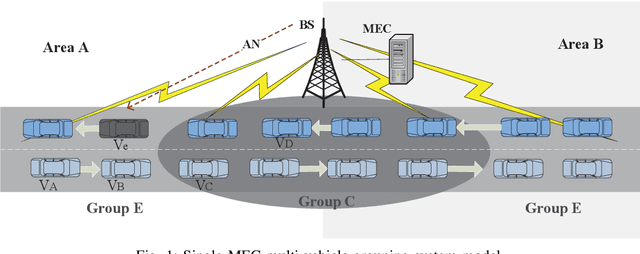
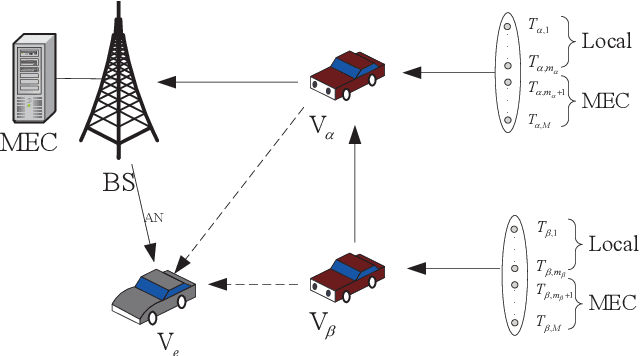
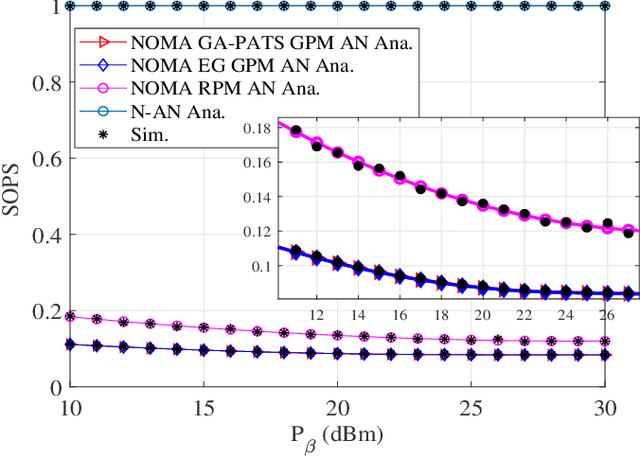
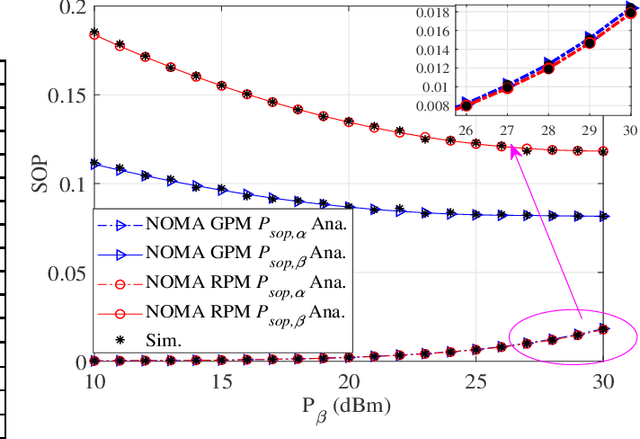
Abstract:In this paper, a multi-vehicle multi-task nonorthogonal multiple access (NOMA) assisted mobile edge computing (MEC) system with passive eavesdropping vehicles is investigated. To heighten the performance of edge vehicles, we propose a vehicle grouping pairing method, which utilizes vehicles near the MEC as full-duplex relays to assist edge vehicles. For promoting transmission security, we employ artificial noise to interrupt eavesdropping vehicles. Furthermore, we derive the approximate expression of secrecy outage probability of the system. The combined optimization of vehicle task division, power allocation, and transmit beamforming is formulated to minimize the total delay of task completion of edge vehicles. Then, we design a power allocation and task scheduling algorithm based on genetic algorithm to solve the mixed-integer nonlinear programming problem. Numerical results demonstrate the superiority of our proposed scheme in terms of system security and transmission delay.
Next-Generation Multiple Access Based on NOMA with Power Level Modulation
Jul 27, 2021
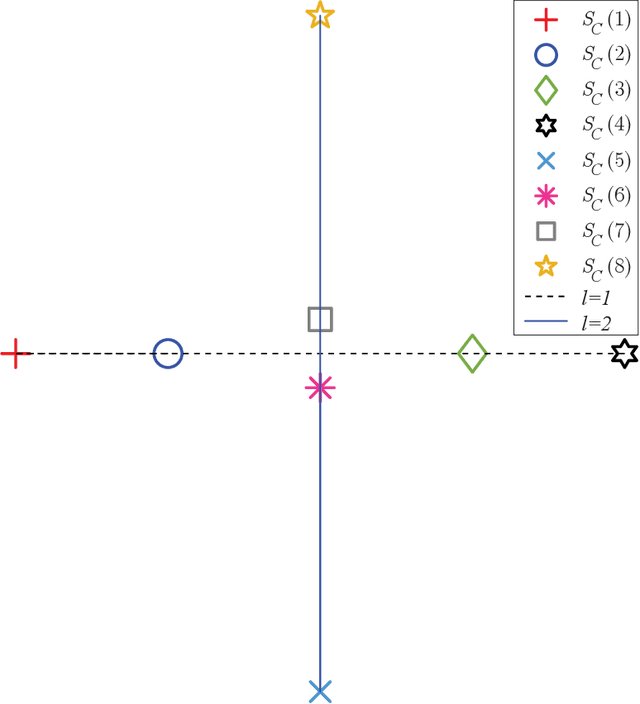
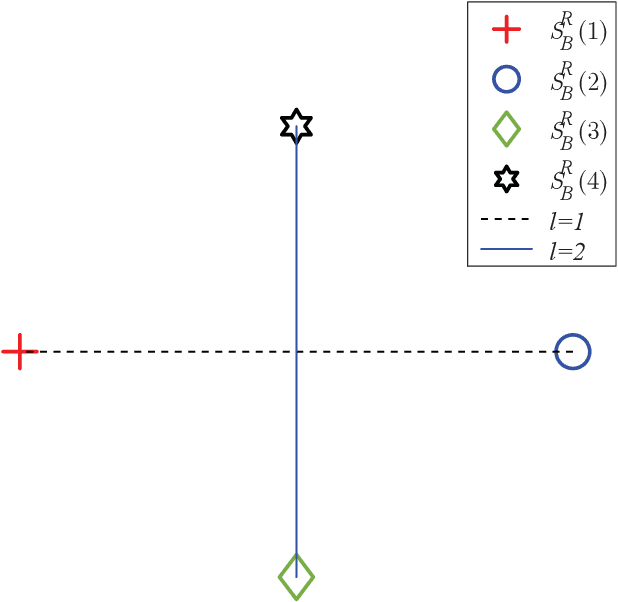
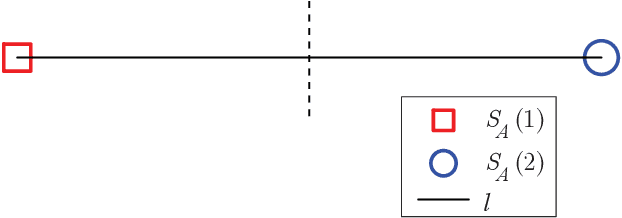
Abstract:To cope with the explosive traffic growth of next-generation wireless communications, it is necessary to design next-generation multiple access techniques that can provide higher spectral efficiency as well as larger-scale connectivity. As a promising candidate, power-domain non-orthogonal multiple access (NOMA) has been widely studied. In conventional power-domain NOMA, multiple users are multiplexed in the same time and frequency band by different preset power levels, which, however, may limit the spectral efficiency under practical finite alphabet inputs. Inspired by the concept of spatial modulation, we propose to solve this problem by encoding extra information bits into the power levels, and exploit different signal constellations to help the receiver distinguish between them. To convey this idea, termed power selection (PS)-NOMA, clearly, we consider a simple downlink two-user NOMA system with finite input constellations. Assuming maximum-likelihood detection, we derive closed-form approximate bit error ratio (BER) expressions for both users. The achievable rates of both users are also derived in closed form. Simulation results verify the analysis and show that the proposed PS-NOMA outperforms conventional NOMA in terms of BER and achievable rate.
Time Series Anomaly Detection with Variational Autoencoders
Jul 03, 2019
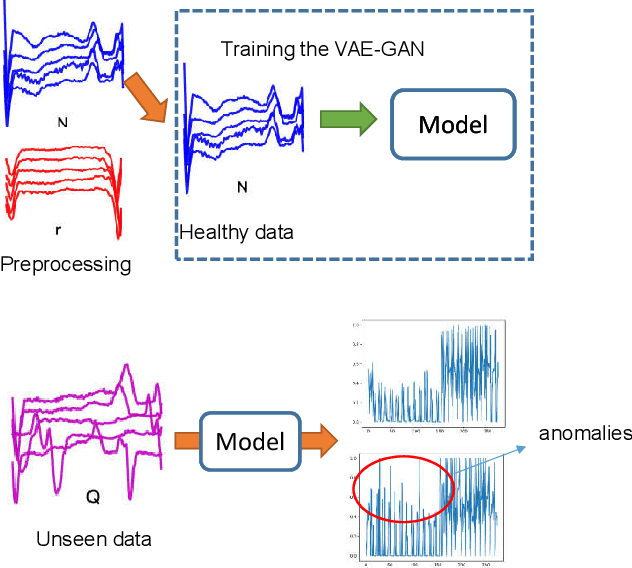

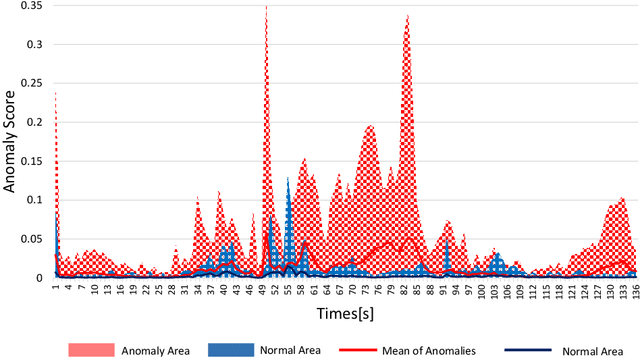
Abstract:Anomaly detection is a very worthwhile question. However, the anomaly is not a simple two-category in reality, so it is difficult to give accurate results through the comparison of similarities. There are already some deep learning models based on GAN for anomaly detection that demonstrate validity and accuracy on time series data sets. In this paper, we propose an unsupervised model-based anomaly detection named LVEAD, which assumpts that the anomalies are objects that do not fit perfectly with the model. For better handling the time series, we use the LSTM model as the encoder and decoder part of the VAE model. Considering to better distinguish the normal and anomaly data, we train a re-encoder model to the latent space to generate new data. Experimental results of several benchmarks show that our method outperforms state-of-the-art anomaly detection techniques.
Anomaly Subsequence Detection with Dynamic Local Density for Time Series
Jun 28, 2019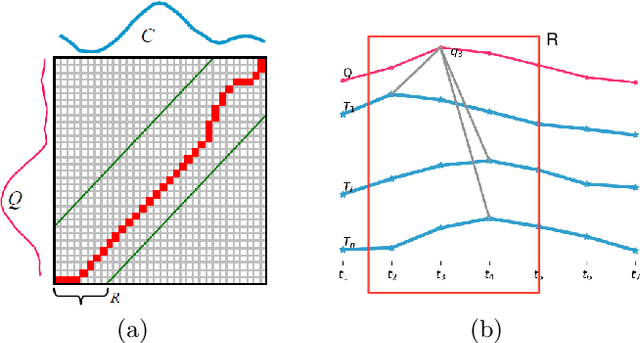
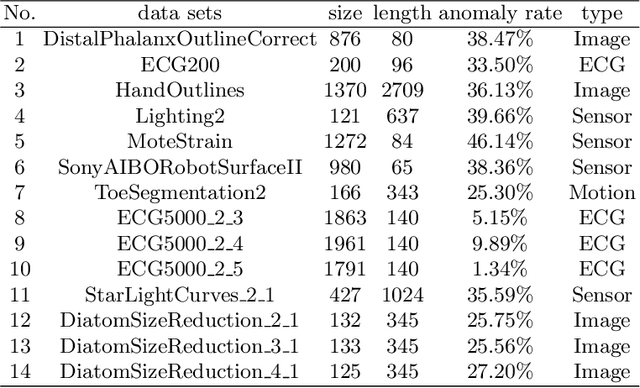
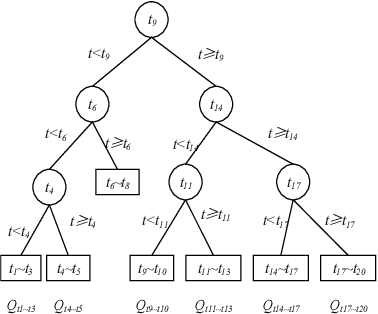
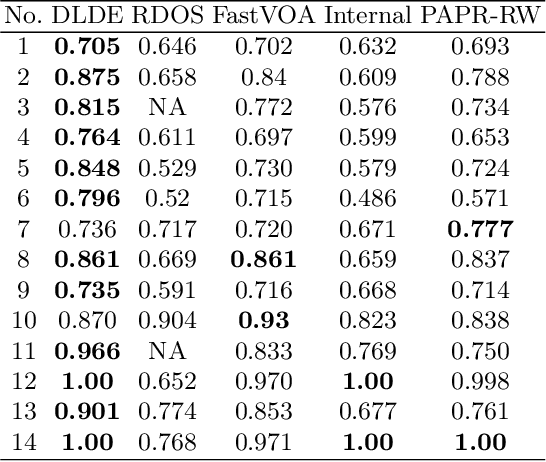
Abstract:Anomaly subsequence detection is to detect inconsistent data, which always contains important information, among time series. Due to the high dimensionality of the time series, traditional anomaly detection often requires a large time overhead; furthermore, even if the dimensionality reduction techniques can improve the efficiency, they will lose some information and suffer from time drift and parameter tuning. In this paper, we propose a new anomaly subsequence detection with Dynamic Local Density Estimation (DLDE) to improve the detection effect without losing the trend information by dynamically dividing the time series using Time Split Tree. In order to avoid the impact of the hash function and the randomness of dynamic time segments, ensemble learning is used. Experimental results on different types of data sets verify that the proposed model outperforms the state-of-art methods, and the accuracy has big improvement.
An Improvement of PAA on Trend-Based Approximation for Time Series
Jun 28, 2019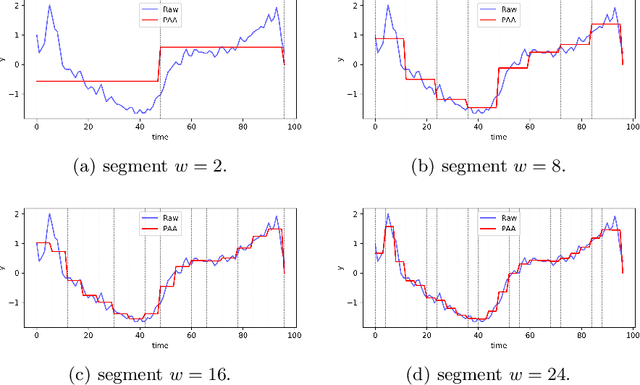
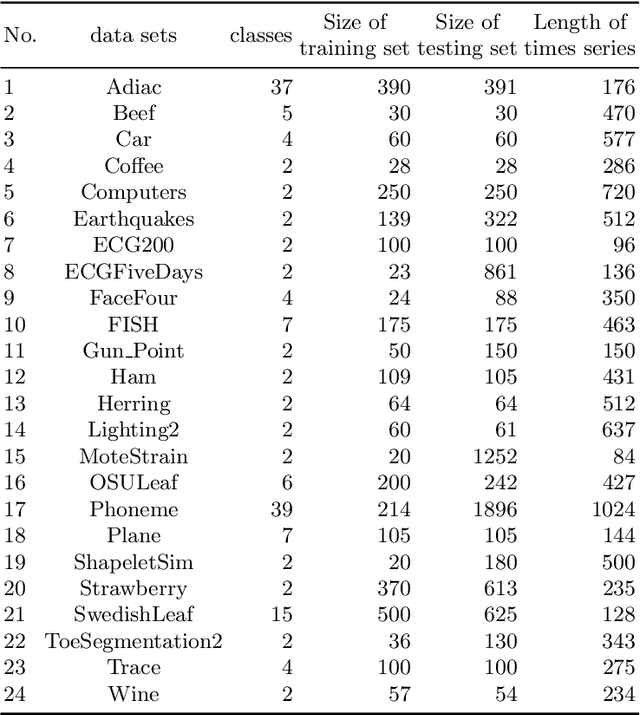
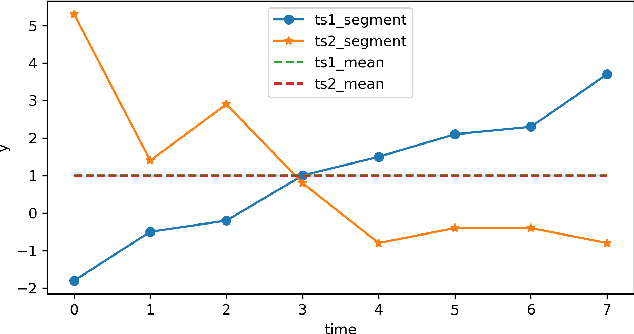
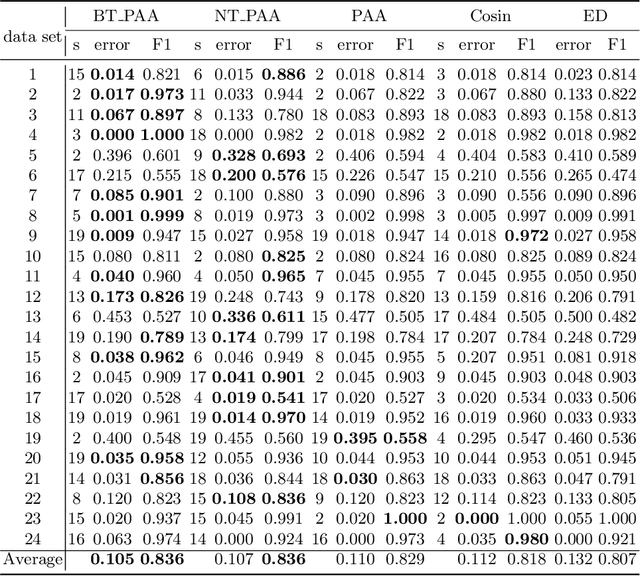
Abstract:Piecewise Aggregate Approximation (PAA) is a competitive basic dimension reduction method for high-dimensional time series mining. When deployed, however, the limitations are obvious that some important information will be missed, especially the trend. In this paper, we propose two new approaches for time series that utilize approximate trend feature information. Our first method is based on relative mean value of each segment to record the trend, which divide each segment into two parts and use the numerical average respectively to represent the trend. We proved that this method satisfies lower bound which guarantee no false dismissals. Our second method uses a binary string to record the trend which is also relative to mean in each segment. Our methods are applied on similarity measurement in classification and anomaly detection, the experimental results show the improvement of accuracy and effectiveness by extracting the trend feature suitably.
 Add to Chrome
Add to Chrome Add to Firefox
Add to Firefox Add to Edge
Add to Edge